The Long Fight to Clean Up America’s Cold War Nuclear Waste
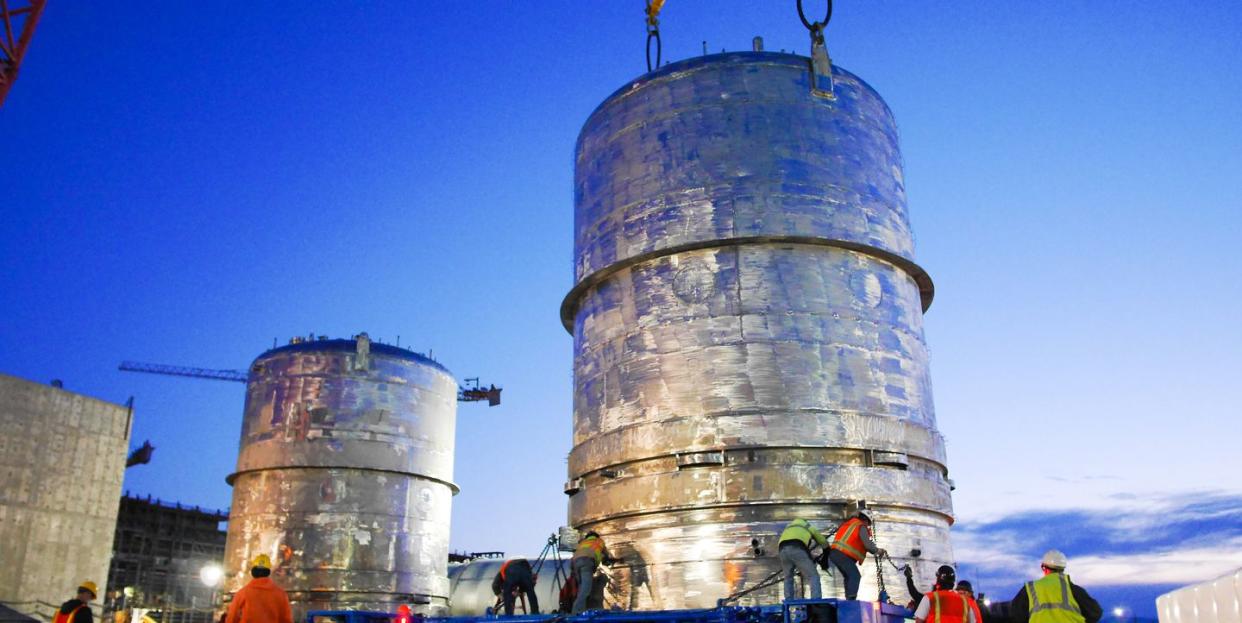
The vitrification science of turning liquid into glass isn’t novel. But vitrifying 56 million gallons of highly radioactive nuclear waste into glass for long-term safe storage offers a tricky endeavor that’s costing the U.S. billions of dollars and decades of time at the Hanford Nuclear Waste Site, the nation’s largest nuclear waste dump.
“Nothing I have ever done has prepared me for this,” says Rick Holmes, general manager for the Waste Treatment Completion Company, a joint operation of Bechtel and AECOM working to build the plant creating the glass. “It is bigger, there are more things and the complexity of the site factors in. The scale is a pretty significant leap.”
As the U.S. Department of Energy continues on its path of cleaning the 580-square-mile site in the barren landscape of southeast Washington State, it nears a major milestone ahead of turning the least-toxic 90 percent of the radioactive waste into vitrified glass. That’s just one step, though, in a multi-decade plan to purge the site of our nuclear past.
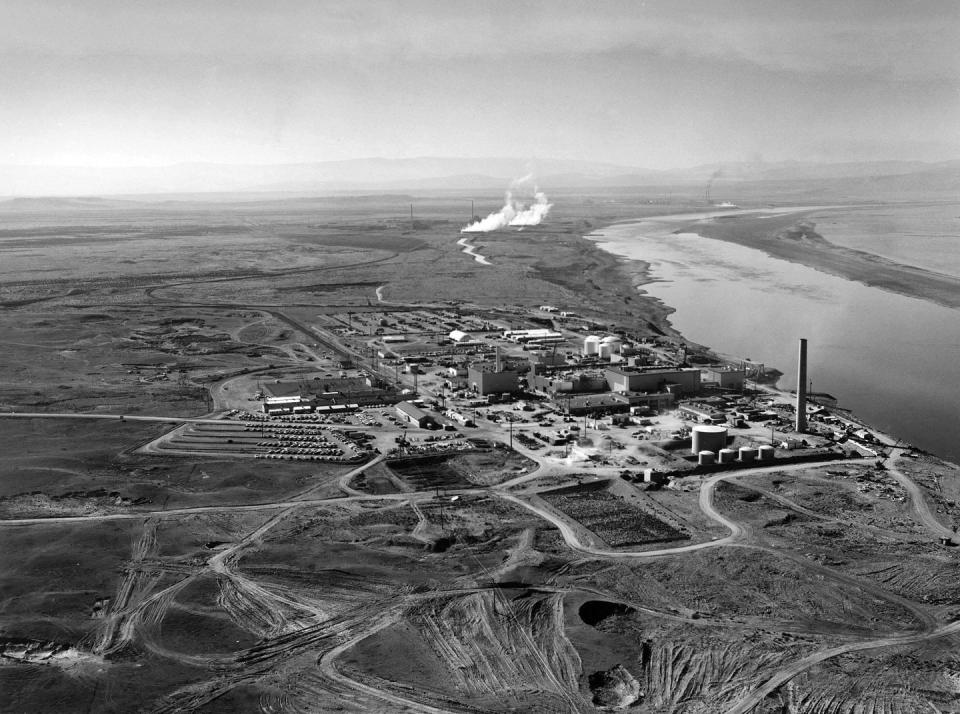
The History of Hanford
The farming and ranching towns of White Bluffs and Hanford received shocking news in 1943 when residents were given just 30 days—and small financial stipends—to abandon homes to make way for the secretive Manhattan Project on bluffs near ample electricity in the form of the Grand Coulee Dam and abundant water along the Columbia River. Soon after residents cleared, a 51,000-person workforce—with employees from all across the country—descended on the area to extract plutonium from uranium for nuclear warfare.
The workers didn’t know the end of what they were doing—just that it was important war work.
Hanford produced the plutonium that fueled the Trinity bomb test in New Mexico and then the plutonium for the bomb that was dropped on Nagasaki, the one that ended World War II.
In the hurry to build weapons, though, little thought was given to cleanup.
That remained far from the minds of government officials when, after a brief rest in 1945 following the war, production kicked back into full force in 1947 to handle Cold War stockpiling. The Cold War production ran until 1987. Over the 40-plus years of production, Hanford ran nine different reactors. The eight oldest were all shut down by 1971, but the newest, the N Reactor, which took four years to build and saw then-President John F. Kennedy visit to dedicate it in 1963, operated all the way through 1987.
In 1989, a Tri-Party Agreement between the Environmental Protection Agency, Washington State Department of Ecology and U.S. Department of Energy agreed to clean the site, kicking off the next life of the Hanford Site.
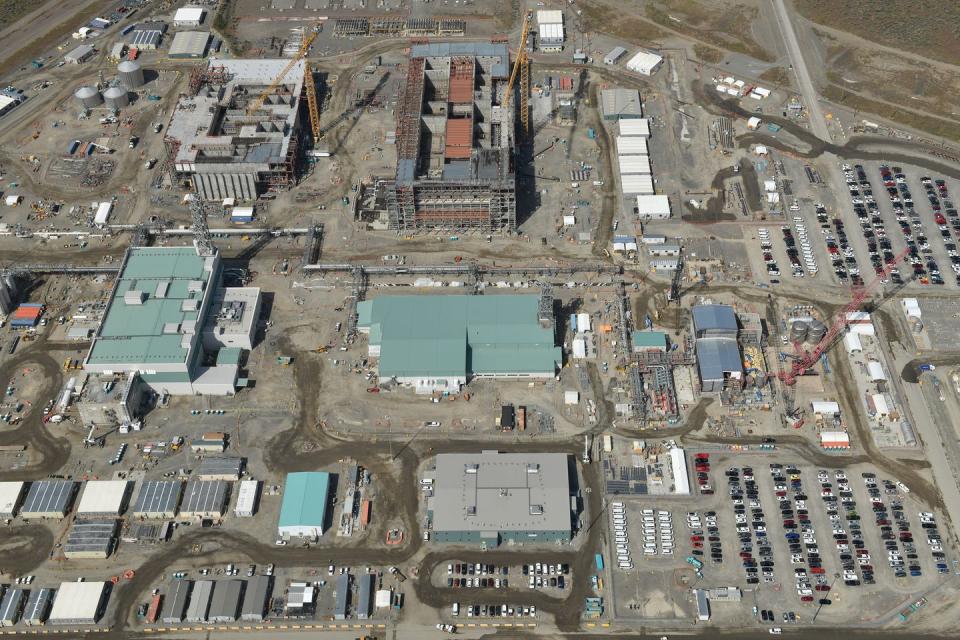
The Complex Cleanup
The U.S. has already spent more than $141 billion working to clean the site and there’s untold billions left to be spent, with projections ranging anywhere from $323 billion to $677 billion, with annual federal spending of about $2.5 billion.
The 56 million gallons of radioactive waste—most in a sludge-like consistency—was stored in 177 underground tanks, some holding up to 1 million gallons, the oldest of which were single-shell wall tanks that leaked and sent radioactive waste into the ground near the Columbia River and groundwater sources. And that’s just the radioactive waste, not even counting other production waste, such as spent nuclear fuel and countless pieces of contaminated equipment, everything from rail cars buried by earth in tunnels to clothing and tools dumped into makeshift pits.
While cleaning the contaminated earth provided one challenge, it was nothing like handling the radioactive sludge spread in tanks across the site. Reactors were purposefully built far from each other to protect against attack.
That’s where the vitrification process comes into play. And now a core piece of that cleanup, a 17-year, $17 billion construction project, approaches startup of the first phase of transforming the waste into inert glass.
As part of the Waste Treatment and Immobilization Plant, dubbed the Vit Plant, the two-decade-old project will take the waste from the tanks and use vitrification technology to pump the waste into melters heated to 2,100 degrees Fahrenheit, and then blend the waste with glass-forming materials. The molten mixture then gets poured into stainless steel canisters to cool and solidify, allowing the radioactivity to dissipate over hundreds to thousands of years.
The technology has been in use around the world, from France to Russia and Japan to the U.K. The U.S. has even treated 40 million gallons of waste at the DOE’s Savannah River site in South Carolina with vitrification. But nothing has ever been done at Hanford’s scale, nor with the complexity of the site’s waste mix that includes up to 1,800 other hazardous chemicals with nearly every tank of waste a different batch of toxicity.
“One of the last major challenges left, if not the last major challenge left, is to get the waste out of those tanks and turned into stable forms where we will store the waste,” says Erik Olds, DOE deputy project integration manager at Hanford.
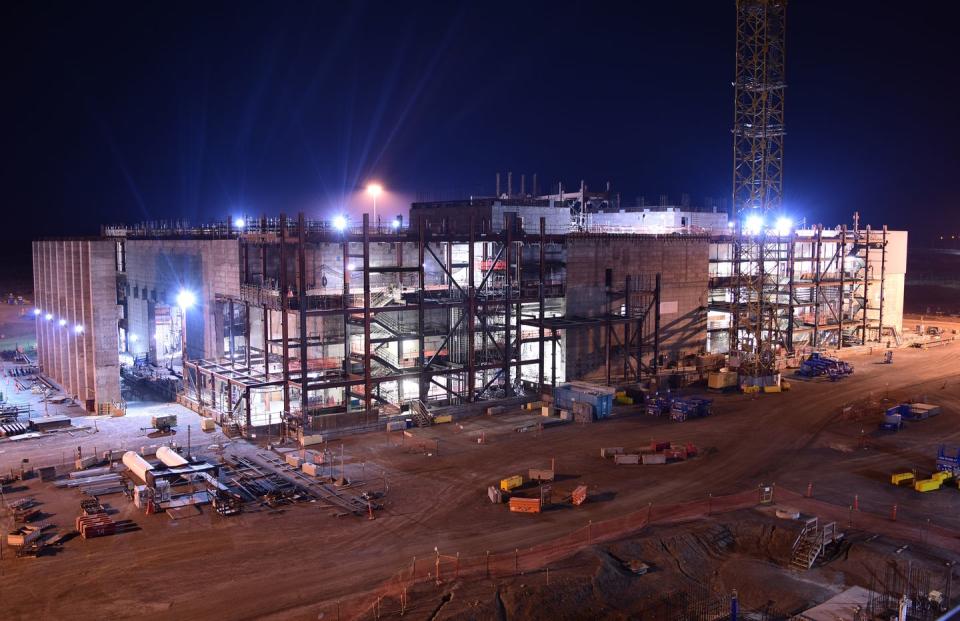
The Vit Plant complex spans 65 acres and includes four major components: a 12-story pretreatment facility to separate waste streams for treatment by radioactivity level; a smaller plant to vitrify low-activity wastes—those with small amounts of radionuclides; a six-story structure to treat high-level waste streams; and an analytical laboratory.
In all, Bechtel is now designing, constructing and commissioning the world’s largest radioactive waste treatment plant.
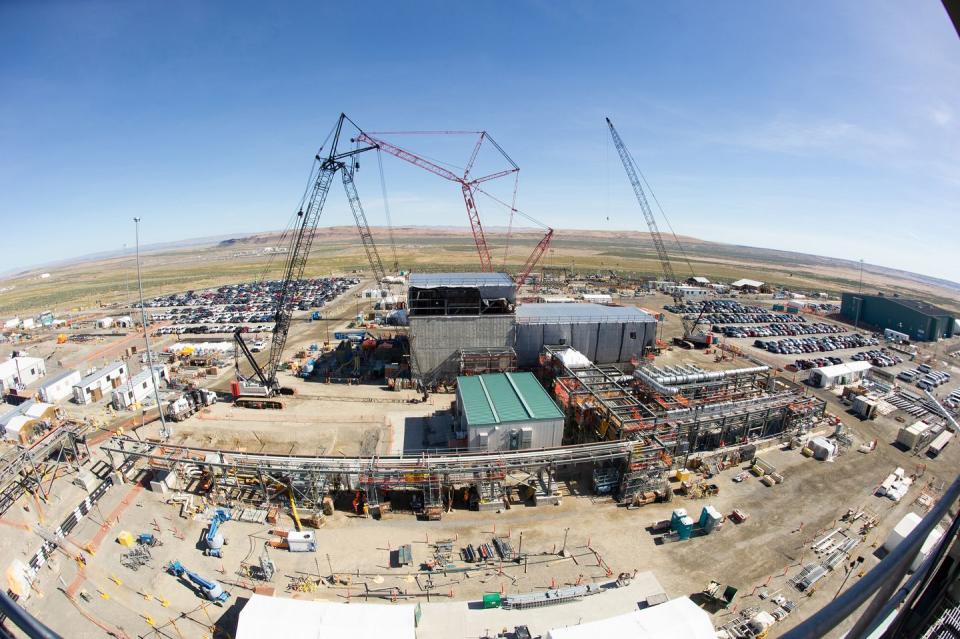
The Slow, Pricey Progress
The project, though, has been fraught with challenges. The complexity of building something that has never been done to this scale or complexity has added billions—it now costs about four times its original 1997 projection—and decades to the timeline.
A new Direct-Feed Low-Activity Waste program was formed that will allow treatment of 90 percent of the tanks’ waste, considered “low-activity” through the vitrification plant as engineers work out technical and design issues for treating high-level waste.
With that plan in place, DOE plans to treat low-activity waste in 2023, maybe even 2022. The high-level waste may not get treated by the planned 2033 as engineers must still determine the best way to handle the extreme levels of radioactivity.
“We are really at a stage we have never been at before,” says Valerie McCain, Bechtel principal vice president and Vit Plant project director. “People can see the end is in sight.”
Already about 11 million gallons of waste is ready to get pumped to the facility. “To have actual decisions about operations on site,” Olds says, “is a great place to be.”
During the process, the tank farm holding the waste will deliver to a separation processing tank, where it gets analyzed and then sent into the Vit Plant for processing. The vitrification process includes the mixing of waste with silica and other glass-forming materials before reaching the 300-ton melters. At about 20 feet by 30 feet and 16 feet tall, the world’s largest glass melters will create containers of class weighing more than 7 tons each. Once vitrified, the glass moves to an on-site disposal facility.
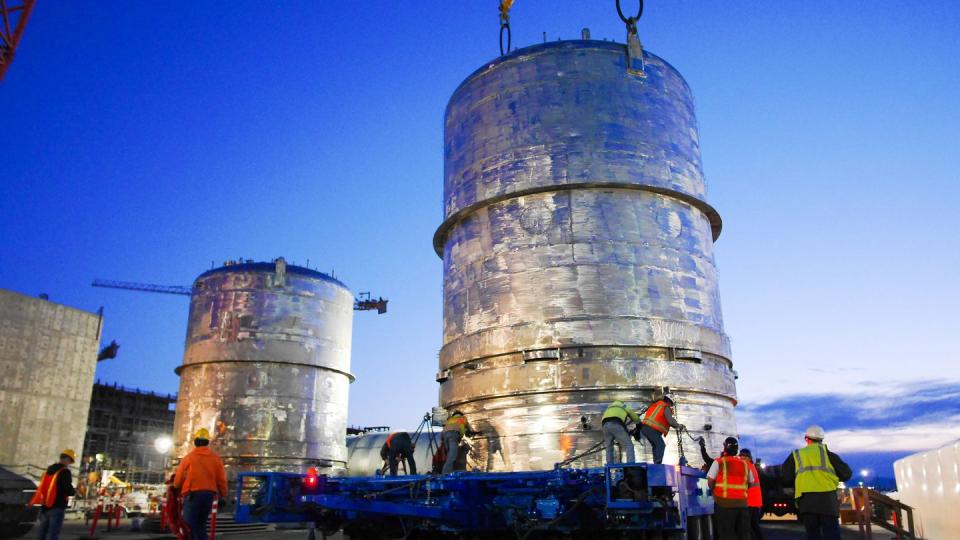
Holmes notes that the process for adding the glass-forming powders to the mixture—a recipe gets generated by the analytical laboratory for each makeup of waste in conjunction with DoE and a group of Vit Plant chemists already working off site with the same equipment and procedures they will use on site—is the same technology used in the cereal-making industry, just now used in feeding the melter.
“Nothing I have ever done prepared me for this,” Holmes says. “I am doing stuff nobody else is doing.”
The first scientific instruments have already arrived at the Vit Plant’s analytical lab with installation happening now. Major instruments include carbon analyzers, ion chromatographs, atomic absorption spectrometers, inductively coupled plasma spectrometers, and radioanalytical counting systems. These are all meant to conduct metals, isotopic elemental, and anion analyses while determining physical and chemical properties.
As 2022 nears, over half of the Vit Plant systems needed to start treating waste are being commissioned and another one-third of the remaining systems are nearing that stage. “[2019] was a transformational year for us,” McCain says.
The next major milestone comes with the “loss of power test” on the melters. Once they get turned on and reach operating temperature, they can never shut down. Testing backup power is planned for 2021.
The overall effort involves more than just a facility turning radioactive waste into vitrified glass. What Bechtel calls the Balance of Facilities includes up to 14 facilities and systems, plus interconnecting piping, electrical and utilities that supports electrical power distribution, backup power, compressed air, steam, chilled water, fuel storage, and communications and control systems.
“We need a city,” Holmes says, “to build a city.” And that city plans to continue cleaning our nation’s largest nuclear waste dump.
You Might Also Like

